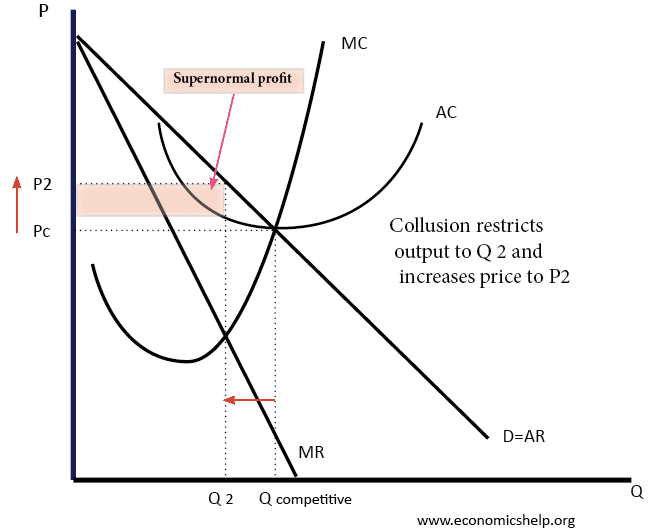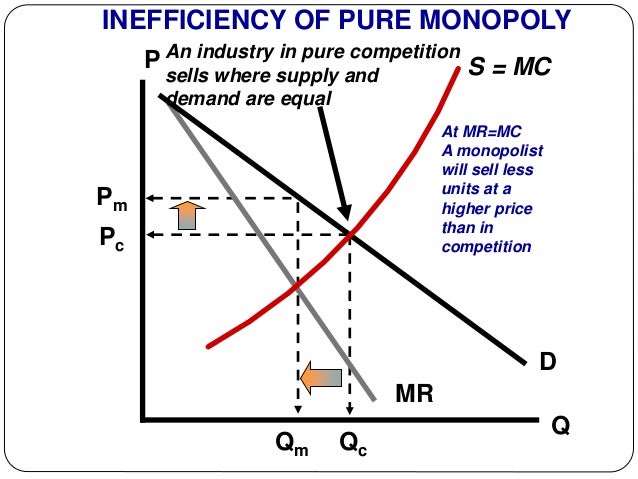

Each good has many close substitutes, so market power is limited: if the price is increased too much, consumers will shift to competitors’ products. Market power derives from product differentiation, since each firm produces a different product. The demand curve of a monopolistically competitive firm is downward sloping, indicating that the firm has a degree of market power. If a monopolistically competitive firm is earning positive economic profits, entry will occur until economic profits are equal to zero.ĥ.2.1 Monopolistic Competition in the Short and Long Runs
Pure monopoly examples automobile industry free#
Free entry indicates that each firm competes with other firms and profits are equal to zero on long run equilibrium. Advertising and marketing of each individual product provide uniqueness that causes the demand curve of each good to be downward sloping. Differentiated products provide each firm with some market power. Monopolistic competition is a market structure defined by free entry and exit, like competition, and differentiated products, like monopoly. In short run equilibrium, the firms faces a high price (P SR), produces quantity Q SR at P SR = MC, and earns positive profits π SR. The graph shows both short run and long run equilibria for a perfectly competitive firm and industry. This is emphasized by using “q” for the firm’s output level, and “Q” for the industry output level. The two panels in Figure 5.1 are for the firm (left) and industry (right), with vastly different units. We will compare the short and long run for a competitive firm in Figure 5.1. In the short run, the number of firms is fixed, whereas in the long run, entry and exit of firms is possible, based on profit conditions. Long Run Equilibrium = A point from which there is no tendency to change (a steady state), and entry and exit of firms. Short Run Equilibrium = A point from which there is no tendency to change (a steady state), and a fixed number of firms. The concept of equilibrium can be extended to include the short run and long run. The possibility of entry and exit of firms occurs in the long run, since the number of firms is fixed in the short run.Īn equilibrium is defined as a point where there is no tendency to change. (2) Large number of buyers and sellers (numerous firms), The perfectly competitive industry has four characteristics: These characteristics will provide the defining characteristics of monopolistic competition and oligopoly. Since monopolistic competition and oligopoly are intermediary market structures, the next section will review the properties and characteristics of perfect competition and monopoly. What one firm does affects the other firms in the oligopoly. Oligopoly is a fascinating market structure due to interaction and interdependency between oligopolistic firms.

Oligopoly = A market structure characterized by barriers to entry and a few firms. Next, we define the market structure oligopoly.

This form of market structure is common in market-based economies, and a trip to the grocery store reveals large numbers of differentiated products: toothpaste, laundry soap, breakfast cereal, and so on. Monopolistically Competitive firms have one characteristic that is like a monopoly (a differentiated product provides market power), and one characteristic that is like a competitive firm (freedom of entry and exit). Monopolistic Competition = A market structure characterized by a differentiated product and freedom of entry and exit. This chapter defines and describes two intermediary market structures: monopolistic competition and oligopoly. Monopoly power is also called market power, and is measured by the Lerner Index. Monopolies have monopoly power, or the ability to change the price of the good. Monopoly is the other extreme of the market structure spectrum, with a single firm. Therefore, numerous firms means that each firm is so small that it is a price taker.

Each perfectly competitive firm is a price taker. In a perfectly competitive industry, each firm is so small relative to the market that it cannot affect the price of the good. The word, “numerous” has special meaning in this context. Perfect competition is on one end of the market structure spectrum, with numerous firms.


 0 kommentar(er)
0 kommentar(er)
